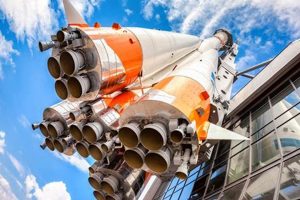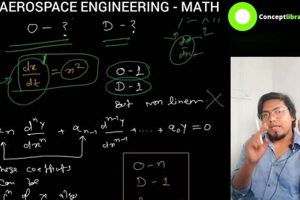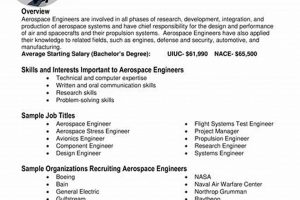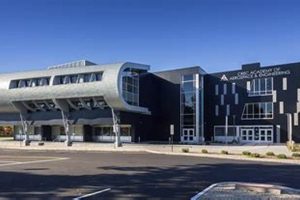The mathematical foundation underpinning aerospace engineering is extensive and crucial for analysis, design, and problem-solving. It encompasses a range of disciplines that enable engineers to model physical phenomena, predict system behavior, and optimize performance. Mastery of these mathematical concepts allows for the creation of safe, efficient, and innovative aerospace vehicles and systems. For example, calculus is used to analyze the trajectory of a rocket, while linear algebra is vital for structural analysis of aircraft wings.
A robust mathematical skillset is fundamentally important for success in aerospace engineering. It allows for accurate simulations, efficient resource allocation, and ultimately, better designs. Historically, advancements in aerospace have been intrinsically linked to breakthroughs in mathematics. From the development of flight equations to the optimization of aerodynamic profiles, mathematical rigor has been at the core of every major innovation in the field. A strong grasp of these principles enables engineers to address the complex challenges inherent in designing and operating vehicles in extreme environments.
The following sections will detail specific mathematical areas crucial to aerospace studies. These include calculus, differential equations, linear algebra, numerical methods, statistics and probability, and complex analysis. Each area contributes uniquely to the skills needed for a successful career in this discipline.
The following tips provide guidance for students preparing for the mathematical challenges inherent in aerospace engineering. A proactive approach to these areas will significantly enhance problem-solving capabilities and overall academic performance.
Tip 1: Solidify Foundational Calculus Skills: A thorough understanding of differential and integral calculus is paramount. Practice applying these concepts to problems involving kinematics, dynamics, and fluid mechanics. For example, calculating lift and drag coefficients requires a solid grasp of integral calculus.
Tip 2: Embrace Differential Equations: Aerospace systems are often modeled using differential equations. Develop proficiency in solving both ordinary and partial differential equations. This skill is essential for analyzing control systems and predicting system responses under various conditions.
Tip 3: Master Linear Algebra: Linear algebra is vital for structural analysis and flight dynamics. Focus on eigenvalue problems, matrix operations, and vector spaces. Understanding these concepts enables the analysis of stability and control characteristics of aircraft and spacecraft.
Tip 4: Cultivate Proficiency in Numerical Methods: Many aerospace problems require numerical solutions due to their complexity. Familiarize oneself with methods such as finite element analysis, finite difference methods, and Runge-Kutta methods. These techniques allow for the approximation of solutions to equations that cannot be solved analytically.
Tip 5: Develop Statistical and Probabilistic Thinking: Uncertainty is inherent in many aerospace applications. Acquire a solid understanding of statistics and probability for analyzing experimental data, assessing reliability, and performing risk analysis. Statistical methods are used extensively in quality control and failure analysis.
Tip 6: Explore Complex Analysis: Complex analysis is useful in analyzing aerodynamic flows and signal processing. Develop an understanding of complex numbers, complex functions, and contour integration. These techniques allow for solving complex flow problems and analyzing system responses.
A commitment to mastering these mathematical areas will provide a strong foundation for success in aerospace engineering. The ability to apply these concepts effectively is crucial for designing innovative solutions and contributing to advancements in the field.
The subsequent sections of this article will delve deeper into specific applications of these mathematical tools within various aerospace sub-disciplines.
1. Calculus
Calculus forms a cornerstone of mathematical training essential for aerospace engineers. It provides the tools necessary to model and analyze continuously changing systems, which are ubiquitous in aerospace applications. Its relevance extends from fundamental physics to advanced design methodologies, making it an indispensable skill for professionals in this field.
- Kinematics and Dynamics
Calculus is used to describe and predict the motion of objects in space. Derivatives are applied to calculate velocity and acceleration, while integrals are used to determine displacement and work done by forces. For example, determining the trajectory of a spacecraft or the dynamic response of an aircraft under varying loads requires a thorough understanding of these concepts.
- Fluid Mechanics
Fluid flow, crucial for aerodynamic performance, is governed by differential equations that rely heavily on calculus. The Navier-Stokes equations, describing fluid motion, require sophisticated calculus techniques for both analytical and numerical solutions. Airfoil design and analysis hinge on accurately modeling the velocity and pressure distributions around the wing, a task accomplished through calculus-based methods.
- Thermodynamics
Thermodynamic principles are central to understanding engine performance and thermal management in aerospace vehicles. Calculus is used to calculate heat transfer rates, entropy changes, and energy balances in thermodynamic systems. Analyzing the efficiency of a jet engine or designing a thermal protection system for a spacecraft necessitates a strong foundation in calculus.
- Control Systems
Designing effective control systems for aircraft and spacecraft demands a solid understanding of calculus. Transfer functions, which relate input and output signals, are expressed using Laplace transforms, a calculus-based technique. Analyzing system stability and designing controllers that meet performance specifications requires applying calculus to the system’s mathematical model.
In summary, calculus provides a fundamental language for describing and analyzing the physical phenomena encountered in aerospace engineering. Its applications are pervasive, ranging from basic kinematic calculations to complex fluid dynamics simulations. The mastery of calculus is therefore an essential element of the mathematical preparation needed for a successful career in this field. The subsequent topics will explore additional mathematical domains and how they connect within the broader curriculum for “what math is required for aerospace engineering”.
2. Differential Equations
Differential equations are a critical component of the mathematical skills essential for aerospace engineering. They serve as the primary tool for modeling systems that evolve over time or space, capturing relationships between a function and its derivatives. The ability to formulate and solve differential equations is thus indispensable for understanding and predicting the behavior of aerospace vehicles and systems. Their importance stems from the fact that many physical laws governing aerospace phenomena are expressed in the form of differential equations. For instance, Newton’s second law of motion, often written as F=ma, can be expressed as a second-order differential equation when acceleration is interpreted as the second derivative of position with respect to time. This fundamental principle is applied in simulating the trajectory of a missile or satellite, where external forces such as gravity and atmospheric drag are modeled as functions of time and position. Similarly, the equations governing fluid flow, heat transfer, and structural dynamics all involve differential equations.
The practical significance of differential equations in aerospace is vast. In flight control systems, engineers use differential equations to model the aircraft’s response to control inputs and disturbances, enabling the design of controllers that ensure stability and desired performance characteristics. These equations describe how the aircraft’s attitude, velocity, and position change over time in response to pilot commands and environmental factors. In structural analysis, differential equations are used to determine the stresses and strains within aircraft components under various loading conditions. These calculations are critical for ensuring the structural integrity of the aircraft and preventing failures. Further, in propulsion systems, differential equations are used to model the combustion process, the flow of gases through turbines and nozzles, and the heat transfer within the engine. These models are vital for optimizing engine performance and fuel efficiency. The ability to solve differential equations, whether analytically or numerically, allows engineers to predict the system’s response under a wide range of conditions and to optimize its design for performance and safety.
In summary, differential equations are not merely an abstract mathematical concept; they are a practical tool employed daily by aerospace engineers to analyze, design, and optimize complex systems. Mastering differential equations is fundamental to understanding and predicting the behavior of aerospace vehicles and their subsystems. While challenges exist in solving complex, nonlinear differential equations, advancements in numerical methods and computational power continue to expand the range of problems that can be tackled. The connection between differential equations and practical applications within aerospace engineering highlights the critical role of mathematical proficiency in advancing the field. Other branches of “what math is required for aerospace engineering” provide various solutions related to the physical applications.
3. Linear Algebra
Linear algebra constitutes a core mathematical pillar for aerospace engineering. Its principles and techniques are fundamentally intertwined with the analysis and design of aircraft, spacecraft, and related systems. The reliance on linear algebra stems from its capacity to model and solve problems involving multiple interconnected variables, essential for describing complex aerospace phenomena. Cause and effect relationships in areas such as structural mechanics, control systems, and flight dynamics are effectively captured and analyzed using linear algebraic tools. The importance of linear algebra within the broader scope of mathematical requirements for aerospace engineering cannot be overstated; it provides the analytical framework for understanding system behavior and performance.
A primary application resides in structural analysis, where linear algebra facilitates the computation of stresses and strains within airframes under various loading conditions. Finite Element Analysis (FEA), a widely used technique for simulating structural behavior, relies heavily on linear algebra to solve large systems of equations that represent the discretized structure. These equations relate nodal displacements to applied forces, enabling engineers to predict structural integrity and optimize designs. Moreover, linear algebra is essential for analyzing the stability and control of aircraft. Eigenvalue analysis, a core concept in linear algebra, is used to determine the stability characteristics of flight control systems. By calculating the eigenvalues of the system’s state matrix, engineers can assess whether the system will return to equilibrium after a disturbance or become unstable. Furthermore, linear transformations are used to represent rotations and coordinate transformations, crucial for navigation and guidance systems.
In conclusion, linear algebra is not merely a theoretical subject for aerospace engineers; it is a practical tool that empowers them to analyze, design, and optimize complex aerospace systems. Its concepts enable the prediction of structural behavior, the analysis of system stability, and the implementation of navigation and guidance systems. Mastery of linear algebra is therefore a fundamental component of the mathematical skillset required for a successful career in this field, facilitating innovation and ensuring the safety and efficiency of aerospace technologies. Linear algebra builds upon other core mathematics requirements as part of “what math is required for aerospace engineering”.
4. Numerical Methods
Numerical methods represent a cornerstone of applied mathematics within the field of aerospace engineering. They provide the essential tools for approximating solutions to problems that lack analytical solutions, a situation frequently encountered in the analysis and design of complex aerospace systems. Their integration into the curriculum underscores a practical dimension of “what math is required for aerospace engineering,” extending beyond theoretical knowledge to problem-solving capabilities.
- Solving Nonlinear Equations
Aerospace engineering problems often involve nonlinear equations that cannot be solved directly. Numerical methods, such as the Newton-Raphson method or bisection method, provide iterative techniques for approximating roots of these equations. This is crucial in determining equilibrium states in flight dynamics or calculating the performance of rocket engines where relationships are non-linear. Mastery of these techniques is critical in “what math is required for aerospace engineering” for problem-solving.
- Numerical Integration and Differentiation
Calculating integrals and derivatives of functions is fundamental in many aerospace applications, including computing aerodynamic forces or simulating heat transfer. When analytical solutions are unavailable, numerical integration techniques like the trapezoidal rule or Simpson’s rule are employed. Similarly, numerical differentiation methods approximate derivatives using discrete data points. The application of these tools for example within computational fluid dynamics and heat transfer simulations demonstrates its significance within “what math is required for aerospace engineering”.
- Solving Ordinary and Partial Differential Equations
Many phenomena in aerospace engineering, such as fluid flow and structural vibrations, are modeled by differential equations. However, obtaining analytical solutions can be challenging or impossible, particularly for complex geometries or boundary conditions. Numerical methods, like finite difference, finite element, or Runge-Kutta methods, provide means to approximate solutions by discretizing the domain and iteratively solving the resulting algebraic equations. This application is relevant given that “what math is required for aerospace engineering” include these simulation concepts and equation understandings.
- Optimization Techniques
Optimization plays a key role in the design and operation of aerospace systems, aiming to maximize performance or minimize cost. Numerical optimization algorithms, such as gradient descent or genetic algorithms, are used to find optimal solutions in problems ranging from trajectory design to aircraft configuration. For instance, optimizing the shape of an aircraft wing to reduce drag or determining the optimal control strategy for a satellite requires numerical optimization methods and emphasizes the role it plays in “what math is required for aerospace engineering”.
In summary, numerical methods are indispensable for addressing the complexities inherent in aerospace engineering problems. These methodologies enhance the overall mathematical toolkit required by aerospace professionals, as a core skill within “what math is required for aerospace engineering” that enables engineers to tackle realistic challenges and develop practical solutions in the field. The employment of numerical methodologies is closely linked to core analytical capabilities required in the field.
5. Statistics
Statistics provides the analytical framework for managing uncertainty and variability, elements inherent in aerospace engineering endeavors. Its connection to “what math is required for aerospace engineering” stems from the necessity of quantifying risk, validating designs, and ensuring reliability. The discipline empowers engineers to draw meaningful conclusions from data, thereby facilitating informed decision-making in environments characterized by complexity and potential hazards. The absence of statistical rigor can lead to inaccurate predictions, flawed designs, and potentially catastrophic failures. For example, when analyzing wind tunnel data, statistical methods are essential for distinguishing genuine aerodynamic trends from random noise, ensuring the accurate assessment of aircraft performance. Similarly, in materials science, statistical analysis is used to characterize the variability in material properties, providing essential data for structural integrity assessments.
Further practical applications of statistics within aerospace engineering are vast. Reliability engineering relies heavily on statistical models to predict the probability of component failures and to optimize maintenance schedules, thereby maximizing operational uptime and minimizing downtime costs. Statistical process control is implemented in manufacturing processes to monitor product quality and to detect deviations from specified tolerances, ensuring consistency and minimizing defects in critical components. Furthermore, in the field of signal processing, statistical techniques are used to filter noise from sensor data, enhancing the accuracy of navigation and guidance systems. Bayesian statistics is also employed to update probability estimates as new data becomes available, a method particularly relevant in real-time decision-making scenarios, such as collision avoidance systems.
In summary, statistics plays a crucial role within the mathematical toolkit essential for aerospace engineers. It equips engineers with the necessary skills to analyze data, quantify uncertainty, and make informed decisions under conditions of variability. Without a strong foundation in statistics, the ability to develop robust and reliable aerospace systems is severely compromised. Statistical analysis is not merely an adjunct to the engineering process, but an integral component of “what math is required for aerospace engineering” that ensures the safety, efficiency, and effectiveness of aerospace endeavors. The emphasis on statistical proficiency reflects the disciplines commitment to rigorous analysis and data-driven decision making.
6. Complex Analysis
Complex analysis, while perhaps less immediately apparent than calculus or linear algebra, constitutes a significant aspect of “what math is required for aerospace engineering.” Its utility lies in providing elegant and powerful tools for solving problems in fluid dynamics, control systems, and electromagnetics, all critical areas within the aerospace domain. The use of complex numbers and functions allows for simplified representations and solutions to differential equations that would otherwise be intractable. Understanding complex analysis enables aerospace engineers to model and analyze phenomena involving oscillatory behavior, resonance, and wave propagation with greater efficiency and accuracy. The connection to “what math is required for aerospace engineering” arises from its ability to provide solutions where real-valued methods fall short.
One primary application of complex analysis is in the study of airfoil design and fluid flow. Conformal mapping, a technique derived from complex analysis, allows engineers to transform complex geometries, such as airfoils, into simpler shapes where the flow equations can be solved more easily. The solutions obtained in the transformed domain can then be mapped back to the original geometry to determine the velocity and pressure distributions around the airfoil. This technique is invaluable for optimizing airfoil shapes to improve lift and reduce drag. Similarly, complex analysis is used in control systems to analyze system stability and design controllers. Laplace transforms, which rely on complex integration, are used to represent and manipulate dynamic systems in the frequency domain, facilitating the design of stable and responsive control algorithms. The ability to analyze these systems using complex variables contributes significantly to the overall effectiveness of aerospace vehicles.
In conclusion, complex analysis, while perhaps not universally emphasized in introductory aerospace curricula, provides a set of powerful techniques for solving a range of complex problems encountered in the field. Its ability to simplify complex geometries and to analyze system stability makes it an invaluable tool for aerospace engineers working in fluid dynamics, control systems, and electromagnetics. As aerospace systems become increasingly sophisticated, a strong understanding of complex analysis will become even more essential for designing innovative and high-performing vehicles. The integration of complex analysis into the standard “what math is required for aerospace engineering” reflects the need for analytical solutions to the most challenging problems.
Frequently Asked Questions
The following addresses common inquiries regarding the mathematical proficiency expected of aerospace engineers. These questions seek to clarify the scope and depth of knowledge necessary for success in this demanding field.
Question 1: Is a strong foundation in mathematics truly critical for aerospace engineering?
Mathematical proficiency is unequivocally critical. Aerospace engineering relies heavily on mathematical modeling and analysis for design, simulation, and problem-solving. A lack of a strong mathematical foundation will significantly impede an engineer’s ability to perform effectively.
Question 2: At what level should calculus be mastered for aerospace engineering?
Mastery should extend beyond basic differentiation and integration to encompass multi-variable calculus, vector calculus, and differential equations. A deep understanding of these concepts is essential for analyzing fluid flow, structural mechanics, and control systems.
Question 3: Is linear algebra as important as calculus for aerospace engineers?
Linear algebra is equally important. It provides the tools for analyzing systems of linear equations, which are fundamental to structural analysis, flight dynamics, and control system design. A thorough understanding of matrix operations, eigenvalue problems, and vector spaces is crucial.
Question 4: Why are numerical methods necessary in aerospace engineering?
Many aerospace problems lack analytical solutions and require numerical approximation. Numerical methods, such as finite element analysis and finite difference methods, allow engineers to solve complex equations that cannot be solved analytically.
Question 5: To what extent is statistics and probability utilized in aerospace engineering?
Statistics and probability are essential for quantifying uncertainty, assessing reliability, and analyzing experimental data. These methods are used extensively in areas such as risk analysis, quality control, and failure analysis.
Question 6: Is complex analysis a required topic for all aerospace engineers?
While not always explicitly required in introductory courses, complex analysis provides powerful tools for solving specialized problems in areas such as aerodynamics and signal processing. Familiarity with complex numbers, functions, and integration can be advantageous for certain applications.
In summary, a robust mathematical skillset is an indispensable attribute for aerospace engineers. Proficiency in calculus, linear algebra, differential equations, numerical methods, statistics, and complex analysis is essential for addressing the challenges inherent in designing and operating aerospace vehicles and systems.
The subsequent section will explore strategies for developing and maintaining the necessary mathematical skills throughout an aerospace engineering career.
Conclusion
This article has explored the extensive mathematical landscape relevant to aerospace engineering. Key mathematical areas, including calculus, differential equations, linear algebra, numerical methods, statistics, and complex analysis, were examined. Their application in structural analysis, fluid dynamics, control systems, and other critical aerospace domains underscores the importance of a robust mathematical foundation for professionals in this discipline.
Continued advancement within aerospace engineering relies on the adept application of these mathematical principles. Engineers are encouraged to cultivate and maintain proficiency in these areas to address increasingly complex challenges. The commitment to mathematical rigor will drive innovation and ensure continued progress in the pursuit of safer, more efficient, and more capable aerospace systems. The dedication to continuous learning and practical application is paramount to the future of “what math is required for aerospace engineering” and to the aerospace sector as a whole.







